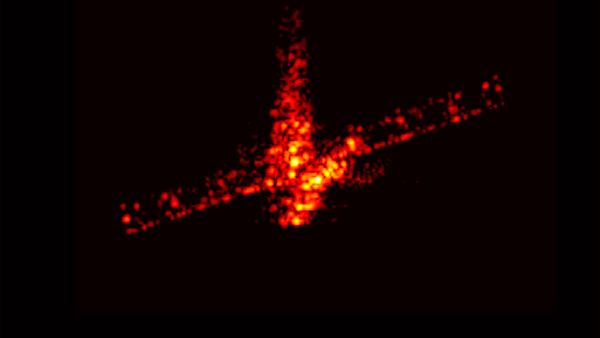The European Space Agency (ESA) has recently revealed the final images of its small spacecraft: A fiery plunge into Earth’s atmosphere.
The spacecraft is a wind-measuring satellite named after the Greek god of the wind, Aeolus, which has supported numerous climate and meteorological studies since its launch in 2018.
In its recent “demise,” Aeolus pioneered an ESA satellite self-destruction experiment, where old satellites are deliberately controlled to self-destruct instead of being left as space debris when they are “on the verge of death.”

Animation showing the final fiery moments of the small spacecraft Aeolus, a wind-measuring satellite – (Photo: ESA)
According to Live Science, Aeolus used its last bit of fuel to lower its altitude before plunging into the atmosphere, where it was consumed by friction and burned up in the sky. The self-destruction process was also fine-tuned to minimize the amount of debris left behind.
The entire demise of Aeolus was recorded by the 34-meter radar antenna TIRA from the Fraunhofer Institute in Germany.
In the footage, after lowering its altitude, the small spacecraft was quickly pulled down by Earth’s atmosphere. About 80% of the craft burned up, while the remaining 20% turned into small fragments guided to fall into Antarctica.
According to ESA, the risk of debris falling back to Earth has been reduced by up to 150 times, and by utilizing the last bit of fuel, the time the satellite spent uncontrolled in orbit was also significantly shortened, thereby minimizing the risk of collision with other spacecraft along the way.
Navigating malfunctioning spacecraft and satellites back to Earth for self-destruction in the atmosphere is a process that has been carried out by several other space agencies.
However, such descents often pose risks of collision with other space equipment on the way back to Earth, as well as dangers from debris—typically directed to uninhabited areas like Antarctica or desolate ocean regions, but of course, smaller is safer.
Thus, ESA is using its own old satellite to refine a standard procedure for this special mission, which also helps prevent leaving space debris, a threat to operational space stations and other spacecraft in orbit.





















































